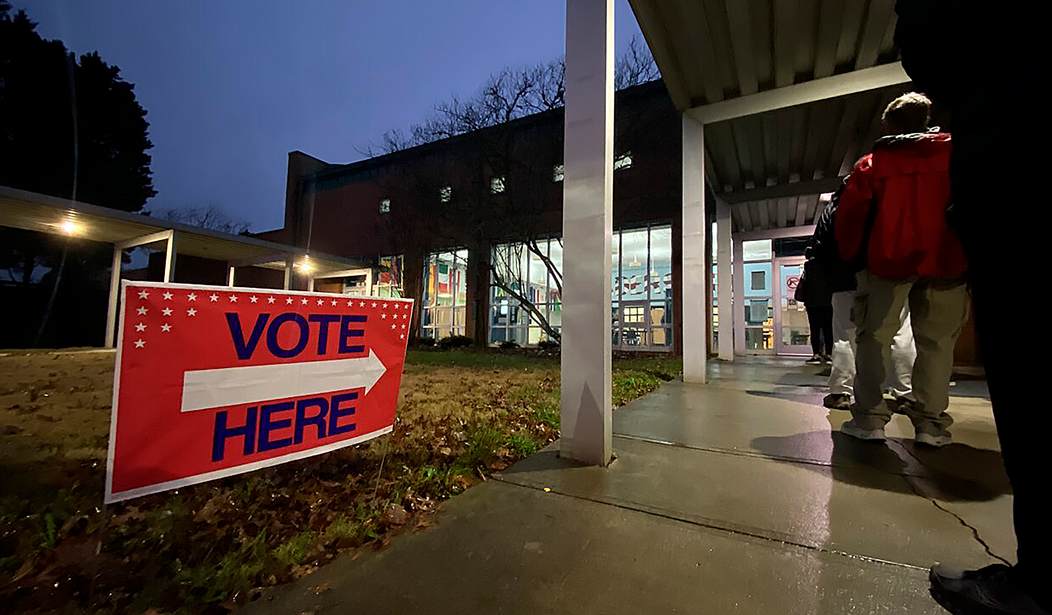How do you know if your town or city has dead people voting in it? In the spirit of the season, let's call them "Halloween voters."
If your town or city does not entirely abide by the National Voter Registration Act of 1993, it is more than likely leaving the door open for dead folks to walk into the voting precincts. Or better yet, these folks could vote absentee - well, they are "absentee voters" in a sense - after all, they are dead or no longer live where they once lived. But for the overly ambitious political operative, they are votes to be had.
Both parties potentially could take advantage of this situation. The political machines of each party learn this early on. did. In the early 1980s, I got my first volunteer job as a political "worker bee." Years later, I realized I was helping to build the foundation for such practices.
It must be noted that, even at its worst, this practice would only affect close elections. It is not too close because the bad political operatives involved could not afford to have a recount as it may shine unwanted light on the corruption.
There are a variety of ways the bad folks can accomplish their goal. One method could be door-to-door canvassing. Remember that the name and address on the voting roll may not match who resides at that address. That represents an opportunity. It clearly means that John Doe has moved or is dead. But it does not mean John Doe cannot still vote.
Without any form of voter ID system in place, anybody can become John Doe. After all, he does not exist, as you have confirmed per your door-to-door canvassing.
If there is no voter rolls list management, as required by the aforementioned law of 1993, John Doe's name would still appear as a potential voter.
In Connecticut in the summer of 2020 during COVID, 100,000 ballots came back to the Secretary of State as undeliverable. This would represent 8% of the registered Democrat and Republican voters (but would not include independents). The Connecticut Secretary of State claimed that the national average was far worse, hitting a whopping 15%. This means that voters have moved or passed away since the last time the list was updated. In Connecticut, the election authorities quickly ordered local towns and cities to purge these folks from their voter rolls.
Recommended
That begs the question: How long were these folks wrongly on the voting rolls? For years, maybe decades? We only found out because of new election practices that emerged with the pandemic.
It is very simple to figure this out. Question: When did you last receive a postcard or letter from the local person in your town responsible for voting list management? If the answer is not in a while or never, it is likely you have been targeted by "dead" or missing folks voting.
Bad actors, usually part of the local political machine, know who cannot be found, and they "find" these folks and allow them to vote with other people "filling" in. They are the "weeds" within the "grassroots" effort.
There is a second chance to catch these fraudulent activities and prevent them from happening. And I hope you answer this question correctly: When was the last time you were asked to show any form of identification prior to voting? If your answer is never (my answer), rarely, or I cannot remember, then I would say your town is a prime target for dead people voting.
I firmly believe that we have the best voting systems in the world. But we also need to follow the laws on the books manage our voting lists, and remove people who should not be on them anymore, purely because they do not exist at that address, town, state, or at all.
It is imperative that we have some form of verification of identity at the polls. The NAACP and other like-minded organizations that once supported the Voter Registration Act now call most forms of list management a violation of voting rights laws. That is a bogus charge. And they cry about photo ID requirements as disproportionately hurting Black people. That's laughable.
Back in the day, the unofficial rule was for each party to use only folks from their own party. This meant that dead or missing Republicans were left to Republican leaders and dead or missing Democrats for Democrat leaders. This would prevent "two" John Does' from showing up on election day at the polls. When a candidate is "set up" or loses the support of their party leaders, then the opposing party could use all the dead folks. That would usually result in a landslide or doom the candidate previously favored to win to lose their election narrowly.
It is simple. If your town has proper list management and proper voter identifications at the polls, no dead people can vote, as they would remain in their graves.
However, if you only do one of the two, it is possible they can vote, and if you do neither, it is highly likely that the dead and missing have been voting in your town for years. Ask your town officials when was the last time the voter rolls have been updated via mail canvassing.
In a democracy, the will of the people should prevail, not the will of the political machine.



















Join the conversation as a VIP Member